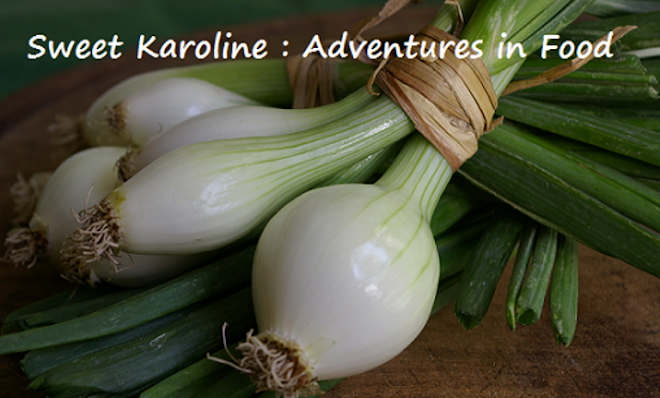 Chicken and penne mixed up in some saucy stories
Chicken and penne mixed up in some saucy storiesBy Karoline Boehm Goodnick, Globe Correspondent | June 9, 2010
Hot and lively, much like the ladies of easy virtue after whom the dish was named, puttanesca sauce originated in southern Italy. Puttana is the Italian word for prostitute, and there are several tales spun about the dish. Some believe that the intense aromas of garlic, anchovies, and olives lured potential customers, who were served pasta and sauce while waiting for the next available girl. Others say the sauce’s strong flavors are symbolic of the women of the night. Yet another account suggests that state-run brothels in the 1950s were only required to give their employees one day off a week, so they depended on sauces made with shelf stable ingredients.
The original working girls knew a little something about how to use their time. Easy to make in large quantities, puttanesca is a 30-minute sauce. Use it fresh from the pot to top pounded, sauteed chicken breasts. Later in the week, dress penne with puttanesca. Adapt the recipe to your tastes, adding more or less garlic, crushed red pepper, or anchovies.
Broccoli rabe, also known as rapini, is a leafy, slightly bitter version of its well-known relative. It is quite popular in Italy and makes a good partner for puttanesca. Blanch it quickly to remove some bitterness and soften the vegetable. Later, saute garlic with the greens to heighten the flavor. Chop any leftover broccoli rabe and stir it into the penne. Spicy puttanesca and bitter rabe is a pairing the saucy women would have liked.
Chicken with puttanesca sauceServes 4, with leftovers
SAUCE
2 tablespoons olive oil
1 medium onion, chopped
3 cloves garlic, chopped
4 anchovy fillets, chopped
1 teaspoon crushed red pepper
1/2 teaspoon dried oregano
1/2 cup red wine
2 tablespoons capers
1 cup pitted Kalamata olives
2 cans (28 ounces) diced tomatoes
Salt and black pepper, to taste
1. In a large flameproof casserole over medium heat, heat the olive oil. Add onion and garlic and cook, stirring occasionally, for 5 minutes or until softened.
2. Add the anchovies, red pepper, and oregano. Cook, stirring constantly, for 1 minute or until the spices release their aromas.
3. Add wine, and simmer until it reduces by half.
4. Add the capers, olives, tomatoes, salt, and pepper. Bring to a boil, lower the heat to medium, and simmer for 20 minutes, or until tomatoes form a chunky sauce. Taste for seasoning and add more salt and black pepper, if you like.
5. Reserve 2 1/2 cups sauce for the penne. Set the remaining sauce aside for the chicken.
CHICKEN
4 skinless, boneless chicken breast halves
Salt and black pepper, to taste
2 tablespoons canola oil
1. Heat oven at 400 degrees. Place the chicken breasts, 2 at a time, between 2 large sheets of plastic wrap. Use the smooth side of a meat mallet or the bottom of a heavy skillet to pound the breasts to about 1/2-inch thickness. Sprinkle with salt and black pepper.
2. In a large heavy skillet with a heatproof handle, heat the canola oil over high heat. Add the chicken and cook for 4 to 5 minutes or until golden on the bottom. Turn and transfer the skillet to the oven.
3. Continue cooking the chicken for 5 minutes or until it is cooked through. Transfer to a plate.
4. Return the skillet to high heat. Add the puttanesca sauce that you reserved for the chicken. Bring the sauce to a boil. Place 1 chicken breast half on each of 4 dinner plates. Top each breast with puttanesca sauce. Garnish with broccoli rabe.
Broccoli rabeServes 4
Salt and pepper, to taste
1 bunch broccoli rabe, ends trimmed
2 tablespoons olive oil
2 cloves garlic, thinly sliced
1/4 cup bread crumbs
1/4 cup grated Parmesan
1. Turn on the broiler. Bring a large pot of salted water to a boil. Add broccoli rabe and return the water to a boil. Cook for 1 to 2 minutes, or until the broccoli rabe is almost tender but still bright green.
2. Drain the broccoli rabe and rinse with cold water.
3. Squeeze the broccoli rabe to remove excess water. Pat it dry with paper towels.
4. Wipe out the skillet. Add the olive oil. Add the garlic, and cook, stirring constantly, for 1 to 2 minutes or until it begins to soften.
5. Add the broccoli, and cook, stirring constantly, for 3 minutes or until it is tender and beginning to brown.
6. In a bowl, combine the bread crumbs and Parmesan. Sprinkle the mixture over the broccoli. Place the pan under the broiler, setting it about 8 inches from the element. Broil for 1 minute, watching the pan carefully, until the crumbs are golden.
Penne puttanescaServes 4
2 1/2 cups puttanesca sauce
Salt and pepper, to taste
1 pound penne
1/4 cup chopped parsley
1/4 cup grated Parmesan
1. In a large flameproof casserole, bring the puttanesca to a boil. Lower the heat, cover the pan, and keep warm.
2. Bring a large pot of salted water to a boil. Add the penne and cook for 8 minutes, stirring often, or until pasta is tender but still has some bite.
3. Drain the pasta.
4. Add a ladle of sauce to each of 4 shallow bowls. Add pasta to each bowl. Top with more sauce. Garnish with parsley and Parmesan.
















